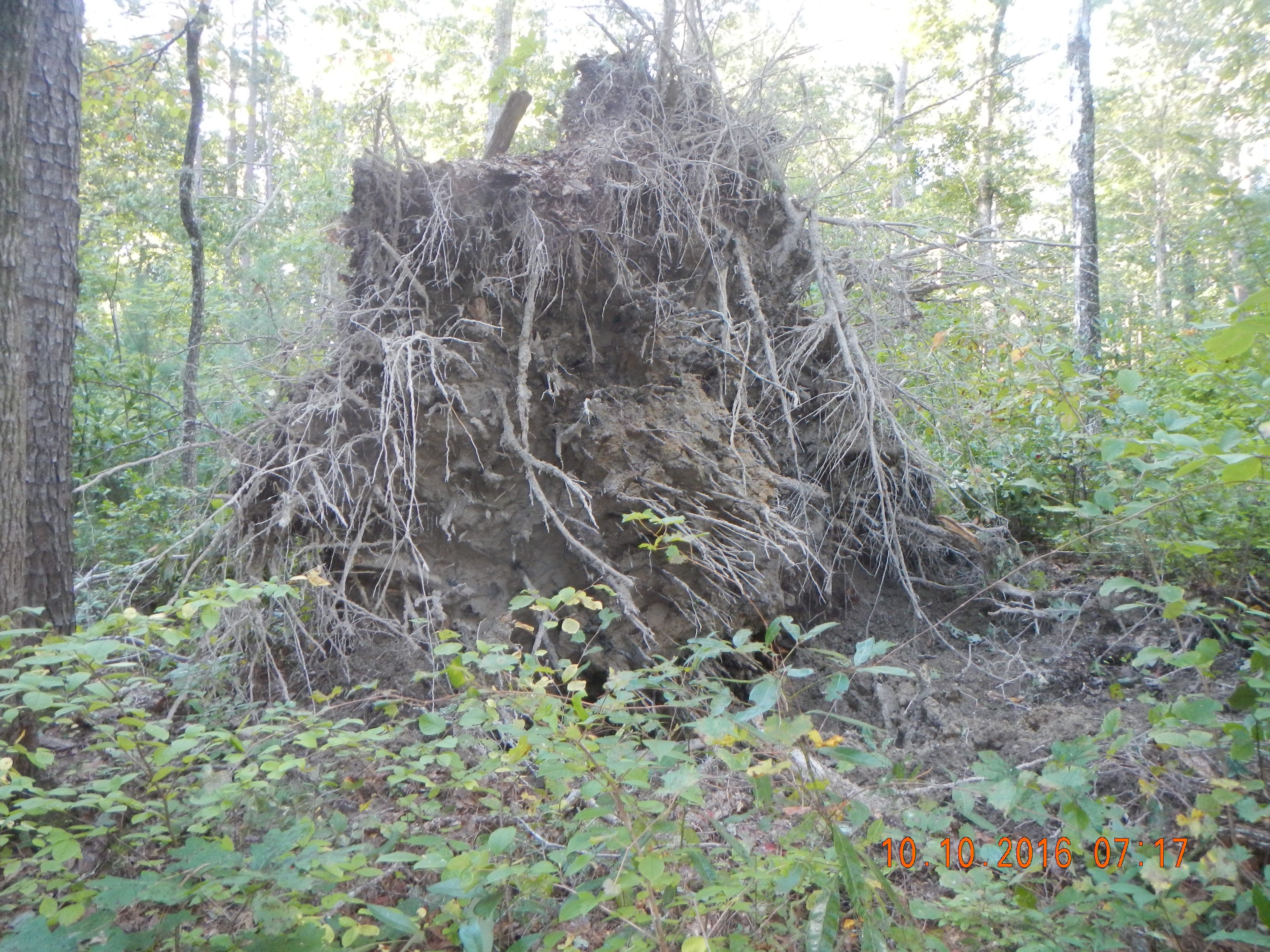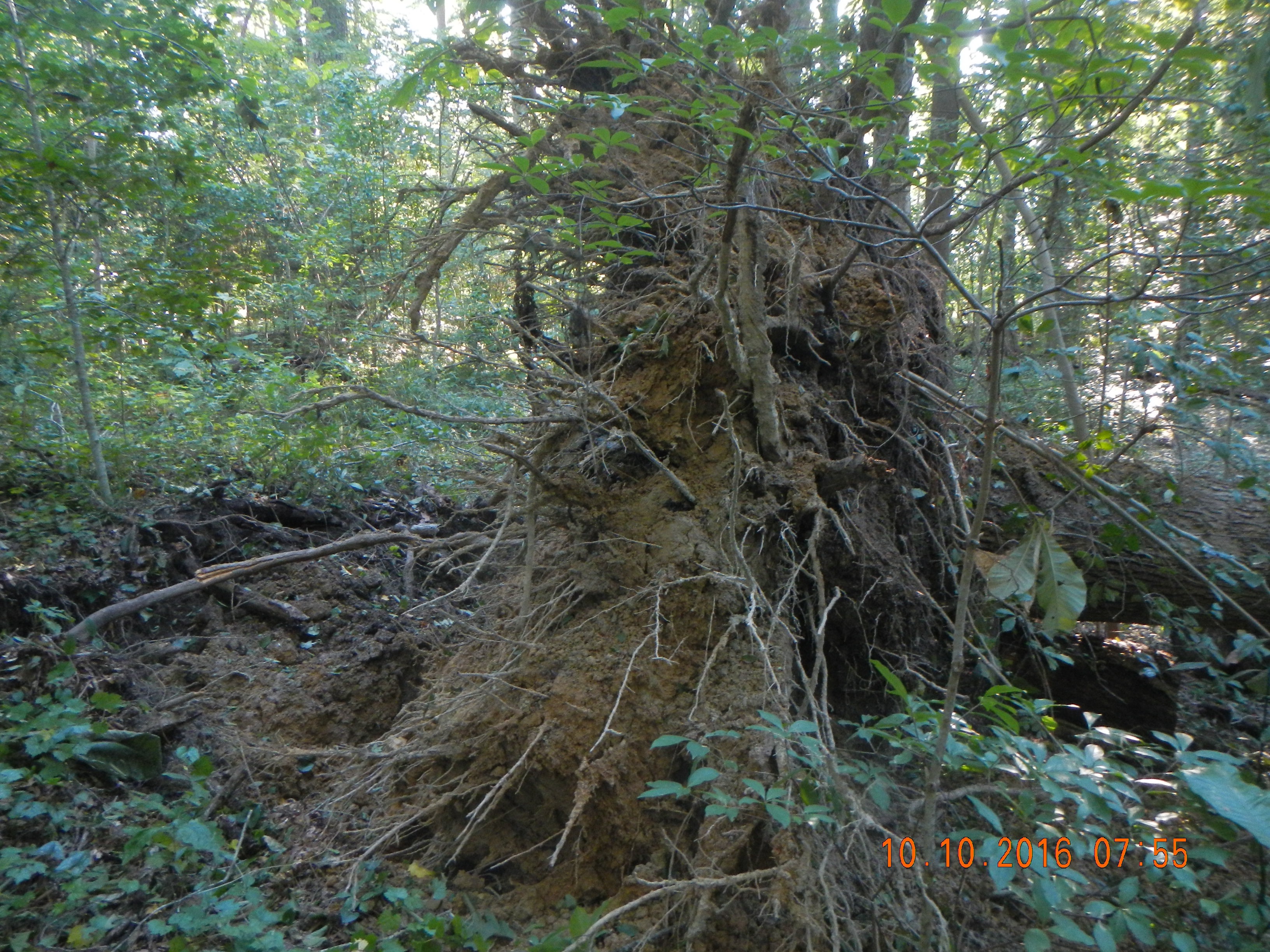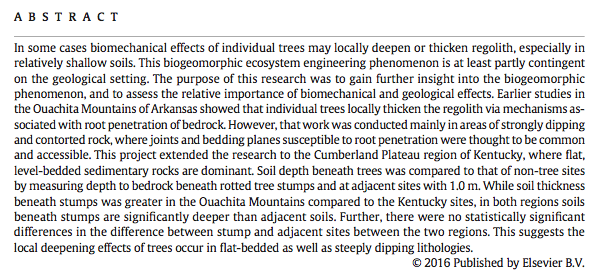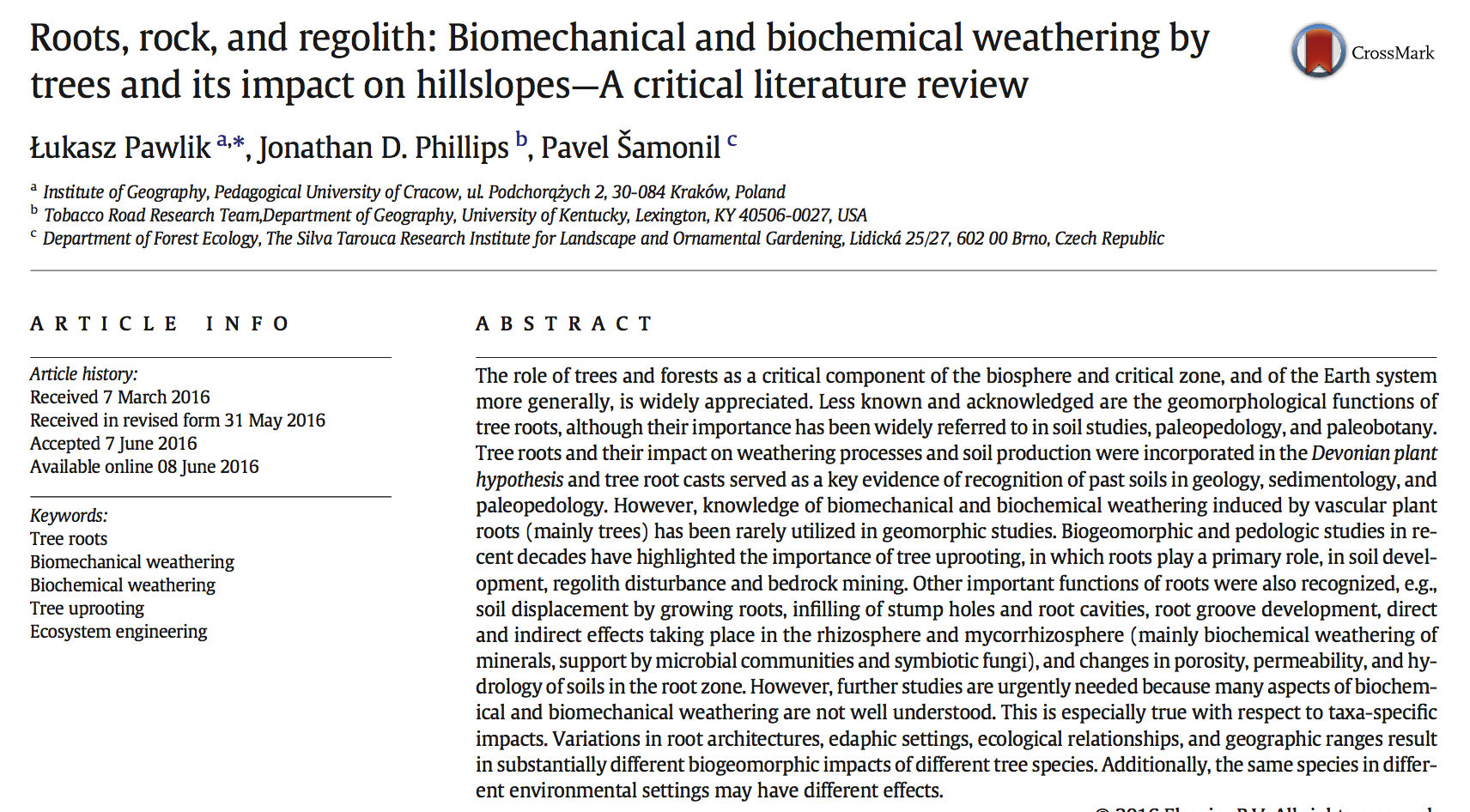HURRICANE MATTHEW & FOREST BIOGEOMORPHOLOGY
Hurricane Matthew devastated Haiti and other Caribbean areas, and did tremendous damage in Florida and South Carolina (I rode out the storm in Myrtle Beach, SC with my son Nate, his wife Morgan, and my delightful 2-year-old granddaughter Caroline). By the time it got to North Carolina, winds were down to gale force, but rain was ferocious (15 to 40 cm) in much of eastern N.C. Where I am at the moment, in Croatan, there was "only" about 10 cm of rain, and only gale force winds. However, that was enough, as it usually is, to get some geomorphic work done in the forest.
Below are some photos of trees uprooted by the storm in Croatan National Forest in the Flanner Beach area. Uprooting not only does significant soil mixing, but the pit-mound topography left behind significantly influences hillslope and soil processes for decades (and occasionally longer) thereafter.


Another example from a cemetery near Maysville, N.C.









